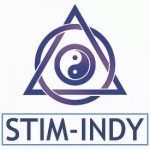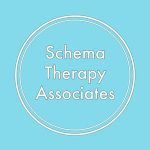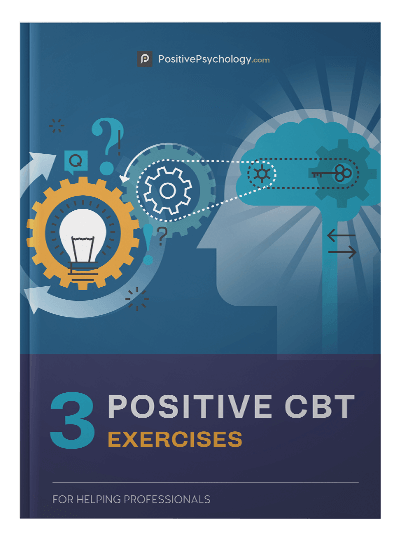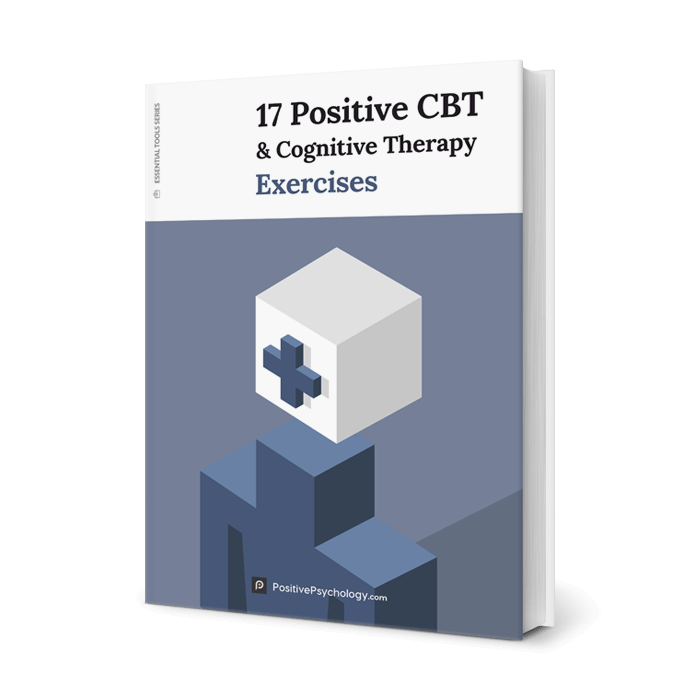Training in Schema Therapy: 14 Courses and Online Options
 Our childhood experiences pave the way for enduring patterns and themes that can shape our relationships, coping styles, and ultimately, the direction of our lives.
Our childhood experiences pave the way for enduring patterns and themes that can shape our relationships, coping styles, and ultimately, the direction of our lives.
If our needs in childhood are not sufficiently met – maybe we experience a lack of nurturing, autonomy, or social connection – we may develop unhelpful coping styles and behavior patterns that can negatively affect us throughout our lives.
Schema Therapy can help people identify and challenge complex and dysfunctional ways of thinking and doing, and support people by exploring alternative, more adaptive coping styles.
Are you interested in becoming a Schema Therapy practitioner?
This article will explain what Schema Therapy is, explore what the certification training route involves, and provide a list of top courses and online options to consider.
Before you continue, we thought you might like to download our three Positive CBT Exercises for free. These science-based exercises will provide you with detailed insight into positive Cognitive-Behavioral Therapy (CBT) and give you the tools to apply it in your therapy or coaching.
This Article Contains:
Training in Schema Therapy Explained
During his time as a cognitive therapist, Dr. Jeffrey Young realized that standard cognitive therapies were unsuccessful in treating many people with complex problems involving enduring and dysfunctional patterns of thinking and feeling (Schema Therapy Institute, n.d.).
Young set out to develop a therapy that could help people identify and change deep-rooted patterns, or “schemas” – a feat that conventional cognitive therapies could not achieve (Schema Therapy Institute, n.d.).
Schema Therapy combines a variety of therapeutic approaches, including cognitive therapy, behavioral therapy, psychodynamic theory, Gestalt, and attachment models. It aims to help people resolve lifelong issues that are deeply entwined with the development of their character (Martin & Young, 2010).
Compared to CBT, Schema Therapy places greater weight on the developmental beginnings of psychological issues and the long-standing themes in a person’s life that can be seen in their behaviors, thinking patterns, and how they relate to others (Martin & Young, 2010).
What is a schema?
Schemas are mental frameworks, life beliefs, patterns, or themes that influence how we organize and make sense of our selves, experiences, and relationships with others. Schemas develop during childhood but are expanded on throughout our lives (Martin & Young, 2010).
Early maladaptive schemas (EMSs) are dysfunctional, deeply entrenched, and typically the focus of Schema Therapy (Martin & Young, 2010).
EMSs consist of memories, emotions, thinking processes, and bodily sensations that arise when our fundamental needs, such as having a secure attachment to others, freedom to express emotions, or autonomy, aren’t met during childhood (Martin & Young, 2010).
EMSs can negatively influence our behavior by driving self-defeating coping strategies (Martin & Young, 2010).
For example, individuals who experienced social isolation or alienation as children may believe they are alone, isolated from others, different, or do not belong to any group or community (Martin & Young, 2010).
To manage this, the individual may develop dysfunctional coping styles, such as only paying attention to how they differ from others, avoiding social situations, or overcompensating by changing how they act to fit into certain groups (Martin & Young, 2010).
How does Schema Therapy work?
Schema Therapy practitioners start by evaluating the client’s core needs and schemas and how these relate to the client’s current issues and the repeated themes across their lifetime (Martin & Young, 2010).
The fundamental aim of Schema Therapy is “schema healing.”
The schema healing process turns down the volume on maladaptive schemas by decreasing the power of the memories, emotions, bodily sensations, and dysfunctional thinking processes associated with them. When the client has more control over their schemas, it is more difficult for the dysfunctional schemas to be activated (Martin & Young, 2010; Young, Klosko, & Weishaar, 2003).
Schema Therapy also helps people liberate themselves from unhelpful coping styles and explore alternative, more adaptive behaviors to get their needs met and seek out healthier relationships (Schema Therapy Institute, n.d.; Martin & Young, 2010).
The therapist uses cognitive, experiential, behavioral techniques (e.g., imagery rescripting, role-play of past events), as well as the therapeutic relationship to explore and challenge the schemas.
Schema Therapy can be extremely difficult for the client, as they need to be able to face long-standing beliefs about themselves and the world. They also need to be disciplined and committed to learning new ways of thinking and doing (Martin & Young, 2010).
Such a challenging process relies on a strong and empathetic therapeutic alliance. The therapist must be able to emphasize positive reasons for change, while also having empathy for the client’s beliefs and coping styles (Martin & Young, 2010).
Certification as a Schema Therapist
The certification body for Schema Therapy, the International Society of Schema Therapy (ISST), has core requirements for ‘Standard’ or ‘Advanced’ certification in Schema Therapy, including:
- At least a master’s degree in psychology, clinical social work, psychiatric nursing, or counseling or a medical degree with a psychiatric residency.
- License to practice psychotherapy independently – where certification or a license is required for any of the above professions, you must hold one. Or if this isn’t in place, you’ll need to meet the standards of one national or international professional psychotherapy organization.
- 25 didactic (traditional teaching) and 15 dyadic (supervised partnered role-play) training hours.
- At least one year of supervision, with at least 20 hours of (50–60 minute) supervision for standard certification, or 40 hours of supervision for advanced certification.
- One tape recording for standard certification or two for advanced certification, scored for competency by independent raters.
- Minimum of 80 patient sessions for standard certification or 160 for advanced certification.
- Minimum of two cases of Schema Therapy for standard certification or four for advanced certification, consisting of at least 25 hours per case. One case must be with a patient with a personality disorder or significant personality disorder features.
- Self-therapy and peer support are also highly recommended.
- Passing assessments for session competency and case conceptualization (Schema Therapy Society, 2021).
The standard international certification route allows you to practice Schema Therapy, participate in outcome studies, and train/supervise other therapists at a basic level with the supervision of an advanced trainer-supervisor (Schema Therapy Society, 2021).
Advanced-level certification means you can treat all patients, participate in outcome studies, and apply for certification as a supervisor/trainer after a specified number of years of practice (Schema Therapy Society, 2021).
You have up to three years following completion of a standard or advanced course to apply for certification. If you complete the standard route, you have up to two years to finish the advanced training and apply for certification (Schema Therapy Society, n.d.).
To work toward ISST certification, you need to attend an ISST-approved certification training program provided by certified trainers. You also need to meet ISST eligibility requirements before beginning a certification program. It’s important to check the particular requirements in your country for ISST training and certification before applying to a program (Schema Therapy Society, 2021).
Any training or workshops outside of the certification curriculum cannot count toward certification; they will only contribute to the continuing education requirements that are needed to maintain your certification as a practitioner of Schema Therapy (Schema Therapy Society, 2021). Find out more certification information from the Schema Therapy Society.
10 Best Schema Therapy Courses and Programs
Schema Therapy is a complex and dynamic therapeutic approach that combines a range of techniques and theories. Training in Schema Therapy also requires much self-reflection and, often, self-therapy to understand your own schemas and how these may influence the therapist–client relationship.
Schema Therapy Institute – UK
The Schema Therapy Institute is based in the United Kingdom and offers foundational and advanced certification options approved by the ISST. The founder, Agnes Sullivan, was trained by Jeffrey Young himself.
Standard and advanced individual Schema Therapy certification
Both courses are designed for experienced mental health professionals and open to those with master’s or doctoral qualifications (or a similar level of experience in mental health) and intermediate or advanced levels of psychotherapy experience.
- Standard certification
This program involves eight days of workshops (40 hours) and 20 hours of supervision. You’ll complete two recorded therapy sessions and carry out at least two treatment cases of Schema Therapy (more than 25 therapy hours each), one with a client with borderline personality disorder (BPD). - Advanced certification
This program involves eight days of workshops (40 hours) and 40 hours of supervision. You’ll complete two recorded sessions and at least four cases of treatment with Schema Therapy.
Find out more on their website.
Masterclass: Experiencing Schema Therapy From the Inside Out
This is an advanced course for clinicians, supervisors, Schema Therapists, and other helping professionals to better understand schema-related issues that crop up in their personal or professional lives.
The one-day course happens in a group environment where the focus is on experiential work. The workshop can also count as three supervision hours as part of individual certification supervision requirements.
Find out more on their website.
Group Schema Therapy certification
Group Schema Therapy is an effective treatment on its own and may also help enhance the benefits of individual Schema Therapy. In this course, you’ll be trained by highly experienced ISST-approved supervisors and trainers.
This standard group certification program involves four modules, with 12 hours of didactic teaching and 12 hours of role-play. You’ll cover many topics, including group Schema Therapy’s foundations, group imagery work, and anger expression/release in group and play.
Find out more on their website.
Child and adolescent Schema Therapy certification
Schema Therapy can be used with children, adolescents, and with children and their parents. This is a four-workshop course covering ‘Schema Therapy for children and adolescents,’ ‘Schema Therapy working with children and parents,’ ‘Helping parents and children work through mode clashes and survive adolescence,’ and ‘Schema Therapy case conceptualization.’
You’ll learn therapeutic strategies suited to children, such as working with drawings, pictures, and puppets. A key part of the workshops is learning how to work with parents.
This certification route is a little more involved. You’ll need to complete 33 hours of didactic work, group case supervision, and evidenced competency working with a child or adolescent in a session (see this PDF for more details; Schema Therapy Society, 2014).
To be eligible for certification as a child and adolescent Schema Therapist, you’ll also need to show you have a qualification or special knowledge of CBT with children, adolescents, and families, depending on the rules in your area (Schema Therapy Society, 2014).
Find out more on their website.
Schema Therapy Institute Midwest
Joan Farrell and Ida Shaw co-direct the Schema Therapy Institute Midwest and are advanced-level Schema Therapists and certified trainer-supervisors in individual and group Schema Therapy.
Farrell and Shaw are also the developers of group Schema Therapy and offer several ISST-approved certification programs (currently online).
Group Schema Therapy, Standard level
This is a four-day training course including one day of self-therapy. You’ll need at least 12 hours of Schema Therapy training to apply for this course.
Group Schema Therapy, Advanced level
This three-day masterclass is delivered by the creators of group Schema Therapy. This course is designed for people who have completed the Introduction to Group Schema Therapy course. The course includes didactic teaching, demonstrations, and practice and is limited to 30 people per group.
Individual Schema Therapy
This four-day course is sponsored by the North Carolina Psychological Association and the Schema Therapy Institute Southeast. It contains 41 hours of continuing education credits and is offered as an online synchronous workshop.
Find out more on their website.
Schema Therapy Associates
Schema Therapy Associates is co-directed by clinical psychologists Tara Green and Gill Heath, who were trained by the founder of Schema Therapy, Jeffrey Young.
They offer online workshops that you can complete as part of your continuing professional development and an ISST-approved certification program. Qualified mental health professionals can attend these workshops as part of their continuing professional development.
ISST requirements for eligibility for the certification program are listed on their website.
Standard certification
The standard option comprises four workshops, including the foundations of Schema Therapy with complex cases, Schema Therapy for complex trauma and borderline profiles, and working with narcissism.
In line with ISST requirements, 20 supervision sessions and at least two cases of treatment with Schema Therapy, including one with a client with personality disorder (+25 hours each), two recordings of therapy sessions, and a case conceptualization are all part of the certification process.
Advanced certification
The advanced route follows the same structure as the standard route, but you’ll complete at least 40 hours of supervision, treat a minimum of four cases with Schema Therapy, and submit a minimum of four recordings of therapy sessions.
Find out more on their website.
4 Online Training Courses and Options
Some providers we’ve listed above deliver training in online formats (and it’s always worth checking if online options are available), but here are some more therapy courses you can complete from the comfort of your own home.
Schema Therapy Institute Australia
The Schema Therapy Institute Australia offers a three-module course, which can be online or face-to-face, for registered therapists, social workers, nurses, psychologists, and other mental health professionals.
The course runs according to ISST online training guidelines, requiring attendance for the full duration of the workshop (arriving on time and not leaving early) and monitoring during dyadic exercises.
Over three weeks, you’ll attend three workshops:
- Schema Therapy for Chronic Axis I Disorders: eight hours didactic and five hours dyadic
- Schema Therapy for BPD/Complex Trauma: nine hours didactic and five hours dyadic
- Schema Therapy for Impulsive, Rigid, Grandiose & Avoidant Clients—Advanced Techniques: eight hours didactic and five hours dyadic
Find out more on their website.
Schema Therapy Training Online
Run by clinical psychologists Chris Hayes and Rob Brockman, Schema Therapy Training Online offers a range of specialist courses in Schema Therapy.
If you’re already a Schema Therapist, these courses can count toward your continuing professional development hours.
Find out more on their website.
Schema Therapy for Eating Disorders
This seven-module course explores the primary concepts and techniques of Schema Therapy for the treatment of eating disorders.
There is a preparatory module for those who are unfamiliar with eating disorders and links to helpful online resources. The course amounts to 24 hours of continuing professional development.
Find out more on their website.
Schema Therapy for Addiction Treatment
This is a masterclass course designed for people with a foundational understanding of Schema Therapy.
Across six modules, you’ll gain a deeper understanding of the development of modes that are unique to addiction and the specific intervention strategies for working with addictions.
Find out more on their website.
Imagery Rescripting in Schema Therapy and Childhood Trauma
Imagery rescripting is a core part of Schema Therapy as an experiential technique to facilitate change.
In this course, you’ll learn a variety of skills, such as how to introduce imagery rescripting for childhood-related trauma, ways to enhance imagery rescripting in treatment, and problem solving frequently encountered challenges in imagery rescripting.
The course offers 16 hours of continuing professional development.
Find out more on their website.
Further Reading: PositivePsychology.com’s Resources
To get more of an understanding of what Schema Therapy looks like in action, read Schema Therapy in Practice: 12 Worksheets & Techniques.
Already a Schema Therapist and want to get lost in some literature on the topic? Here are 17 Schema Therapy Books for Improving Your Therapeutic Skills.
If you’re looking for more science-based ways to help others through CBT, this collection contains 17 validated positive CBT tools for practitioners. Use them to help others overcome unhelpful thoughts and feelings and develop more positive behaviors.
A Take-Home Message
Schema Therapy can be an extremely powerful and life-changing experience for many people who have not found success with standard therapeutic approaches.
Schema Therapists support clients to gain insight into their early maladaptive schemas to help them shift long-standing, entrenched, and dysfunctional coping styles and behaviors.
Delivering Schema Therapy is a highly skillful and dynamic practice, and understandably, gaining competence in this approach requires many hours of study, practice, and reflection.
If you’ve set your sights on the certified route for Schema Therapy and already have a strong background in therapy, psychology, or mental health, look out for the ISST-approved certification routes for Schema Therapy. There’s no doubt this can be an incredibly rewarding career choice, and we wish you luck on your schema training journey.
We hope you enjoyed reading this article. For more information, don’t forget to download our three Positive CBT Exercises for free.
- Martin, R., & Young, J. (2010). Schema therapy. In K. S. Dobson, Handbook of cognitive-behavioral therapies (3rd ed.) (pp. 317–346). Guilford Press.
- Schema Therapy Institute. (n.d.). About schema therapy. Retrieved from https://www.schemainstitute.co.uk/understanding-schema-therapy/
- Schema Therapy Society. (n.d.). ISST certification in schema therapy. Retrieved from:
https://schematherapysociety.org/Certification - Schema Therapy Society. (2014). Training: Schema therapist for children and adolescents. Retrieved from https://schematherapysociety.org/Resources/Documents/ST%20-%20CA%20Guidelines%20and%20Content%20LoGrBFZa.pdf
- Schema Therapy Society. (2021). 2021 ISST requirements. Retrieved from https://schematherapysociety.org/resources/Documents/2021%20ISST%20CERTIFICATION%20REQUIREMENTS%20(INDIV)%20V.2.0%20(2).pdf
- Young, J. E., Klosko, J. S., & Weishaar, M. E. (2003). Schema therapy: A practitioner’s guide. Guilford Press.
Read other articles by their category
- Body & Brain (49)
- Coaching & Application (57)
- Compassion (26)
- Counseling (51)
- Emotional Intelligence (24)
- Gratitude (18)
- Grief & Bereavement (21)
- Happiness & SWB (40)
- Meaning & Values (26)
- Meditation (20)
- Mindfulness (45)
- Motivation & Goals (45)
- Optimism & Mindset (34)
- Positive CBT (28)
- Positive Communication (20)
- Positive Education (47)
- Positive Emotions (32)
- Positive Leadership (18)
- Positive Parenting (4)
- Positive Psychology (33)
- Positive Workplace (37)
- Productivity (17)
- Relationships (46)
- Resilience & Coping (36)
- Self Awareness (21)
- Self Esteem (38)
- Strengths & Virtues (32)
- Stress & Burnout Prevention (34)
- Theory & Books (46)
- Therapy Exercises (37)
- Types of Therapy (64)








